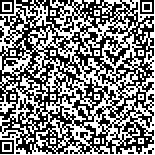|

二维码(扫一下试试看!) |
| 低聚木糖作为牺牲剂在光催化产氢中的应用 |
| Application of Xylooligosaccharide as a Sacrificial Agent in Photocatalytic Hydrogen Production |
| 收稿日期:2019-11-16 |
| DOI:10.11980/j.issn.0254-508X.2020.03.002 |
| 关键词: 低聚木糖 TiO2 C3N4 光催化 氢气 |
| Key Words:xylooligosaccharide TiO2 C3N4 photocatalytic hydrogen |
| 基金项目:国家自然科学基金资助项目(31670595,31770628);泰山学者工程。 |
|
| 摘要点击次数: 5275 |
| 全文下载次数: 3236 |
| 摘要:目前光催化产氢的研究主要集中于修饰和改性半导体材料来提高其光催化产氢性能。在光催化分解水产氢过程中需要添加牺牲剂甲醇来消耗掉光生空穴,牺牲剂是影响半导体光催化剂产氢性能的一个重要因素。本研究选择可再生生物质低聚木糖作为牺牲剂,探讨了其光催化产氢性能,并与常用牺牲剂甲醇进行了光催化产氢性能比较。结果表明,未负载贵金属Pt时,半导体材料TiO2和C3N4进行光催化产氢时未检测到氢气。负载质量分数1%的 Pt后,半导体材料Pt-TiO2和Pt-C3N4可以作为光催化剂进行产氢,经过24 h的光催化反应,基于催化剂质量,以甲醇为牺牲剂时分别产出4298.3 μmol/g和356.5 μmol/g的氢气,以低聚木糖为牺牲剂时分别产出3054.5 μmol/g和495.6 μmol/g的氢气。低聚木糖可以作为光催化产氢的牺牲剂,尤其用作Pt-C3N4的牺牲剂时,产氢性能优于甲醇。 |
| Abstract:Current research of photocatalytic hydrogen production mainly focused on modification of semiconductor materials for improving their photocatalytic hydrogen production performance. It was well known that in the process of decomposing water to produce hydrogen, methanol was added as a sacrificial agent to consume photogenerated holes. Therefore, it could be seen that sacrificial agent should also be a very important factor affecting the hydrogen production performance of semiconductor photocatalysts. Xylooligosaccharide was chosen as sacrificial agent and compared with the common used sacrificial agent methanol in photocatalytic hydrogen production performance. The results showed that no hydrogen was detected in photocatalytic hydrogen production by semiconductor materials TiO2 and C3N4 without Pt loading. Semiconductor materials TiO2 and C3N4 loading 1 wt% precious metal Pt i.e Pt-TiO2 and Pt-C3N4 could be used as photocatalysts for hydrogen production based on catalyst mass, 4298.3 μmol/g and 356.5 μmol/g hydrogen were produced respectively with methanol as sacrificial agent after 24 h photocatalytic reaction, 3054.5 μmol/g and 495.6 μmol/g hydrogen were produced respectively after 24 h photocatalytic reaction using xylooligosaccharide as sacrificial agent. The reacts indicated that xylooligosaccharide could be used as sacrificial agent for photocatalytic hydrogen production, especially for Pt-C3N4, its hydrogen production performance was better than that of methanol. |
| 查看全文 HTML 查看/发表评论 下载PDF阅读器 |